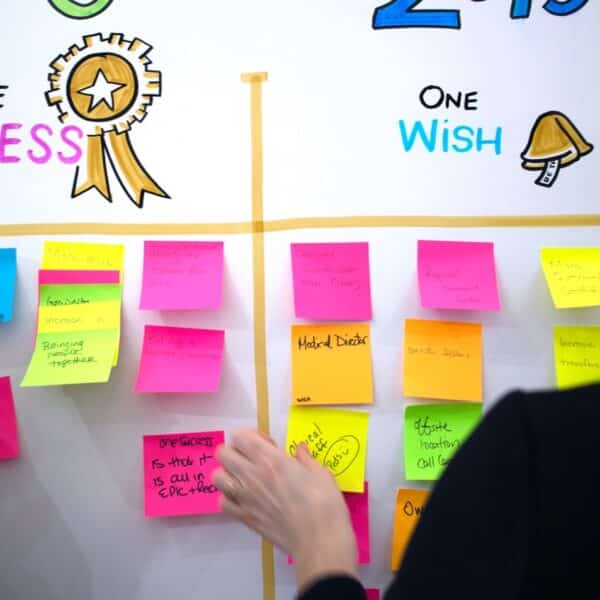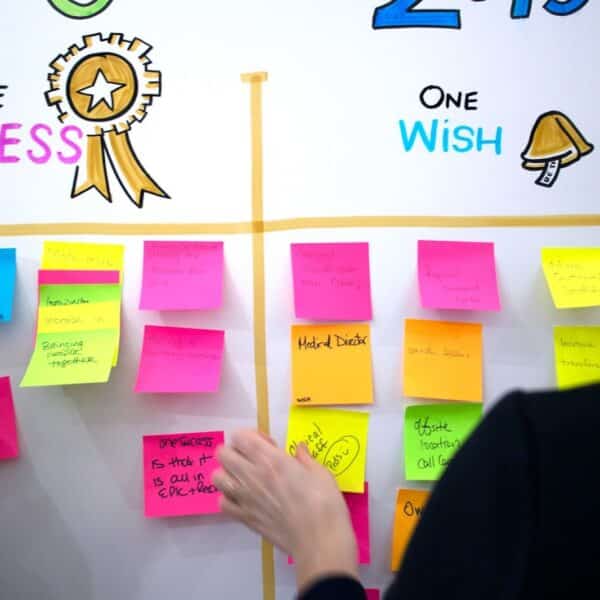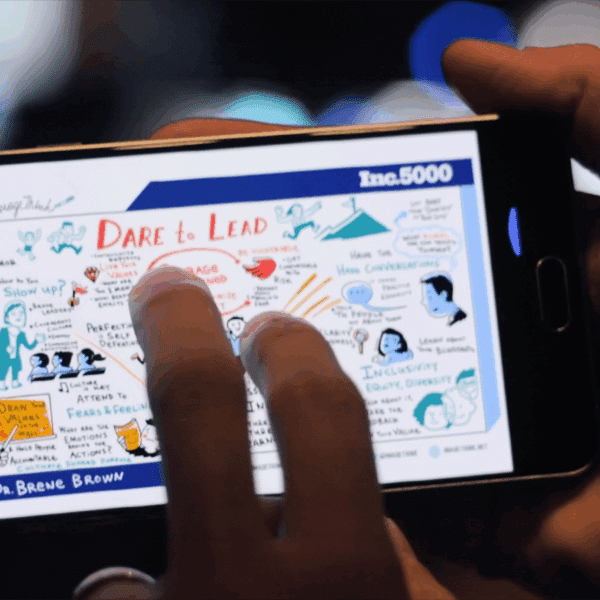Think back to the last meeting or class you attended.
Did you walk away with a head full of insights… or a notebook full of scribbles you never looked at again?
That’s the difference we’re exploring today — graphic notes versus traditional notes — and how the way you capture ideas can change what you remember, how you engage, and how you share those insights with others.
What Are Graphic Notes? A Visual Thinking Primer
Graphic notes are what happens when note-taking meets visual storytelling.
They’re part art, part strategy, combining drawings, keywords, symbols, and layout to show how ideas connect in real time.
Unlike a straight list of bullet points, graphic notes are maps of meaning. They make your content instantly scannable, sticky, and—let’s be honest—more fun to revisit. This is why visual communication is such a powerful tool for visual learners and mixed audiences alike.
At ImageThink, we use graphic notes to capture complex strategies, brainstorms, and conference keynotes so that teams can see their thinking, not just read it back.
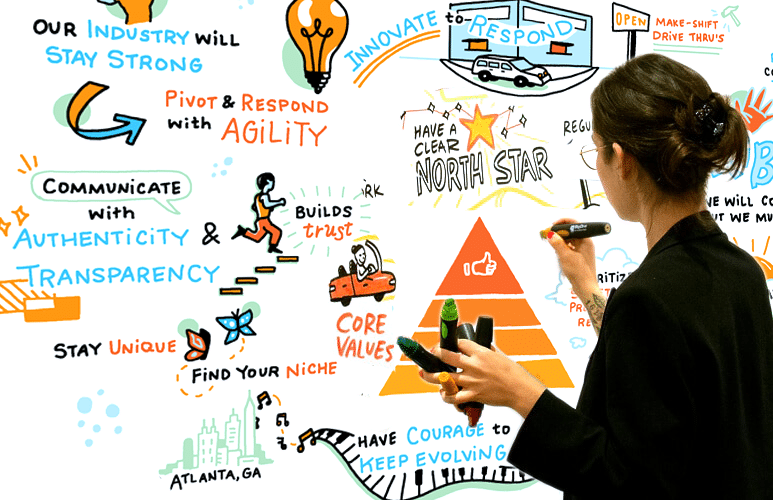
Traditional Notes: Efficient, But Are They Effective?
Traditional notes are the comfort food of meetings: reliable, familiar, and fast to prepare. Bulleted lists, outlines, and verbatim transcripts have their place, especially when precision is critical.
But here’s the catch: traditional notes can be passive. They record, but they don’t always process. Without some form of synthesis, those tidy bullet points might be forgotten before the ink dries.
Why Drawing Can Boost Your Brain
Research shows that when you draw information instead of just writing it down, you’re activating more of your brain:
- You’re listening.
- You’re deciding what matters most.
- You’re creating a visual representation of those ideas.
This three-step mental workout improves memory retention and makes recall faster later on. Even simple icons and arrows can anchor meaning far better than a wall of text.
And the science backs it up:
- Drawing significantly improves recall—drawing beats writing.
In a series of seven free-recall experiments, participants who drew words remembered them better than those who simply wrote them—even under time pressure or with longer word lists. The effect held even when compared with other strong memory strategies. - Drawing engages more brain regions than writing.
Studies using brain imaging found that drawing activates broader neural circuitry than writing alone, engaging regions linked to memory, movement, and visual processing—an effect that supports stronger retention even among older adults. - Visual mnemonics strengthen learning and recall.
Linking information to vivid mental images—especially unexpected or exaggerated ones—creates more durable memory pathways, improving long-term recall in both educational and professional settings.
In other words: it’s not about being an artist, but about engaging your brain differently.
Schedule a Free Visual Strategy Call
When Visual Notes Help—and When They Don’t
Graphic notes are a game changer when:
- You’re mapping out relationships between ideas.
- You want people leaning in, not zoning out.
- You need a visual artifact that lives beyond the meeting.
They’re less ideal when:
- You need an exact legal or compliance record.
- Speed is everything and synthesis can wait.
- The note-taker isn’t comfortable capturing live content (though this skill is learnable).
Schedule a Free Visual Strategy Call
Use Cases: From Classrooms to Boardrooms
Classrooms: Graphic Notes in Classrooms
In educational settings, graphic notes transform routine lectures into dynamic visual experiences. By combining keywords, icons, and spatial layouts, students engage multiple learning modalities—visual, auditory, and kinesthetic—simultaneously. This multi-sensory approach not only accelerates comprehension of complex concepts but also reinforces long-term retention, as learners revisit visually structured notes that map relationships between ideas rather than re-reading linear text.
Meetings: Visual Notes in Meetings
In corporate and team meetings, visual notes turn dense strategy sessions into collaborative, bite-sized visual stories. As participants watch ideas unfold in real time, complete with symbols, flowcharts, and color-coded clusters, they develop a shared language that bridges departmental silos. These visual artifacts drive clearer decision-making, streamline follow-up action items, and keep teams aligned, ensuring that every stakeholder can quickly recall and act on key insights.
Conferences: Graphic Recording at Conferences
At industry conferences, graphic recording creates buzzworthy visuals that speakers and attendees can photograph, share, and revisit long after the event ends. By capturing keynote themes, workshop takeaways, and audience Q&A in vibrant murals, graphic recorders amplify event reach across social media and foster deeper engagement. These large-scale visual summaries not only enhance brand visibility but also serve as enduring resources that encapsulate the energy and expertise of the conference.
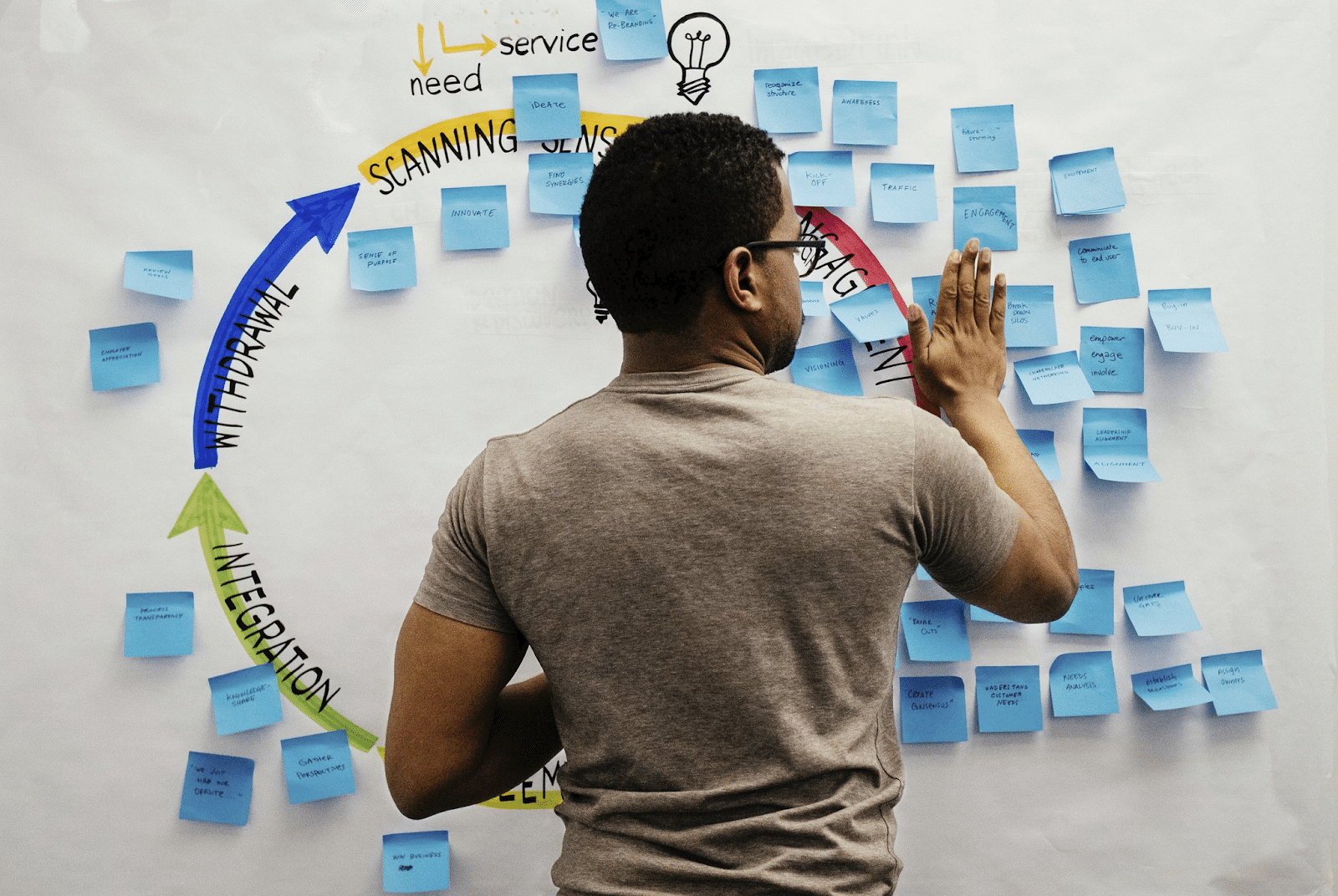
How to Start Using Graphic Notes
- Start small — add icons and shapes to your notes.
- Use spatial layouts — boxes, columns, clusters — to group ideas.
- Listen for themes, not just sentences.
- Blend — combine traditional detail with visual structure for the best of both.
Choosing the Right Format for the Moment
- Graphic notes inspire, simplify complexity, and keep people engaged.
- Traditional notes deliver speed and precision when you need every word.
- The smart move? Use both. Capture the big picture visually, then fill in the details in text.
The Bottom Line
The way you take notes can make the difference between an idea that sticks and one that slips away. With evidence showing that drawing boosts recall, engages more of the brain, and strengthens learning through visual mnemonics, graphic notes are more than a style choice, they’re a science-backed strategy.
"*" indicates required fields

